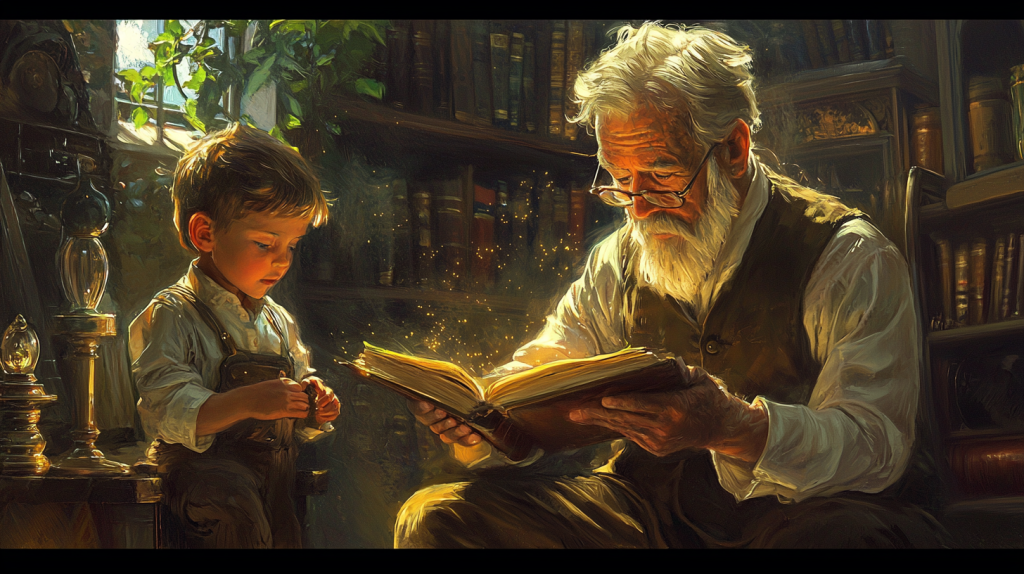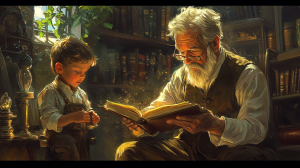
Storytelling is an intrinsic part of human history and culture, with narratives functioning as a mirror that reflects society’s values, beliefs, and transformations. From ancient times to the modern age, storytelling has been an essential tool for communication, education, and entertainment, carrying with it the power to shape societies and influence cultures. Today, as we navigate a complex digital landscape, understanding the dynamics of storytelling and recognizing its impact has never been more crucial. This article delves into the recent developments and updates in the art of storytelling, analyzing how narratives continue to mold cultural identities and perceptions across different contexts and mediums.
In recent years, storytelling has gained renewed attention due to the proliferation of digital platforms that allow stories to travel instantly across the globe. This transformation is reshaping not only the way stories are told but also who tells them and who participates in them. Furthermore, as societies become more diverse and interconnected, there’s an increasing recognition of the necessity for inclusive storytelling that encompasses varied voices and experiences. This article will provide a comprehensive overview of how modern narratives are crafted, shared, and perceived, while highlighting their cultural significance and the implications these hold for the future.
The Evolution of Storytelling in the Digital Age
The Shift from Oral to Digital Narratives
The advancement of technology has fundamentally altered the landscape of storytelling. Traditionally, stories were passed down orally before the advent of the written word, allowing each generation to impart its wisdom, beliefs, and customs to the next. This traditional method of storytelling was deeply participatory and community-based, fostering a shared cultural heritage. However, with the digital revolution, storytelling has expanded beyond oral and written boundaries, embracing new forms such as digital storytelling, podcasts, and interactive visual media.
Digital storytelling permits narratives to reach a global audience with Pulitoto unprecedented speed and efficiency. Platforms like YouTube, Instagram, and TikTok, to name a few, have empowered individuals to become storytellers in their own right, breaking down previous barriers of entry caused by the need for publishing infrastructure or broadcasting systems. This democratization has resulted in a richer, more diverse tapestry of stories that includes voices from traditionally marginalized or underrepresented groups.
One clear example of this transformation is the rise of podcasting. As of recent statistics, there are over two million active podcasts available across various platforms, covering a wide array of subjects ranging from personal storytelling to investigative journalism. This modern form of narrative sharing has captured audiences worldwide, offering both accessibility and intimacy, as listeners can engage with the storyteller on a deeper, more personal level. Such formats highlight the continuous evolution of Narration and showcase how digital platforms are instrumental in shaping modern narrative structures.

The Role of Social Media in Storytelling
Social media platforms have revolutionized how stories are communicated and consumed. They have transformed every user into a potential storyteller, providing the tools necessary to craft narratives that can reach global audiences instantaneously. Platforms such as Facebook, Twitter, and Instagram allow for real-time sharing and engagement, turning Narration into a dynamic conversation rather than a one-way transmission.
Moreover, social media encourages a new form of storytelling that is characterized by its brevity and visual nature. The popularity of memes, for instance, underscores how imagery combined with concise text can convey powerful messages or cultural critiques with just a few clicks. Platforms such as Snapchat and Instagram Stories have capitalized on this by enabling users to create ephemeral narratives that emphasize the present moment, reflecting a shift towards more immediate, impactful Narration.
Data underscores the significant role social media plays in contemporary storytelling. It is estimated that more than 3 billion people around the world are active on social media platforms, which indicates a massive engagement with user-generated content. This vast participation indicates not only a yearning for connection through shared stories but also highlights the cultural shift towards digital narratives as primary conduits of communication.
Social media also fosters a participatory culture where audiences are not just passive consumers but active collaborators in the Narration process. Hashtags, comments, and shares allow for instantaneous feedback and communal engagement, giving rise to collective storytelling experiences. In this environment, narratives can spread virally, cross-pollinating ideas across different cultural contexts and creating a complex mosaic of global storytelling.
The Power of Inclusive Storytelling
Amplifying Diverse Voices
The democratization of storytelling has opened the doors for more inclusive narratives, enabling marginalized voices to gain visibility and recognition in the cultural dialogue. This shift is crucial in a world that is increasingly aware of systemic inequalities and strives for social justice and representation. Inclusive storytelling ensures that different perspectives and experiences are acknowledged and valued, which is vital for a holistic understanding of contemporary culture.
In recent years, there has been a concerted effort across various mediums to amplify diverse voices. In literature, the push for diversity has led to the emergence of numerous bestselling authors from underrepresented backgrounds who share narratives that challenge dominant cultural norms and provide alternative viewpoints. Similarly, in film and television, initiatives like #OscarsSoWhite have brought attention to the lack of diversity in media, leading to more stories that reflect the diversity of audiences around the world.
The impact of inclusive storytelling extends beyond representation; it contributes to cultural empathy and understanding. By engaging with narratives from different perspectives, audiences can develop a better appreciation of the complexities and intersections of various identities. This engagement fosters empathy, as stories have the inherent ability to connect individuals by highlighting shared human experiences, despite differences in culture, race, or socio-economic backgrounds.
The Role of Technology in Fostering Inclusivity
Technology has become a powerful ally in the quest for more inclusive storytelling. Advances in artificial intelligence and machine learning, for example, are used to analyze patterns of diversity and representation in media content. These tools allow creators to identify gaps and biases in storytelling, offering data-driven insights that can inform more equitable narrative creation.
Virtual reality (VR) and augmented reality (AR) technologies also hold great potential for inclusive storytelling. These immersive mediums enable users to experience narratives in a firsthand, embodied way, fostering a deep sense of connection and empathy. For instance, VR experiences that simulate the lives of marginalized individuals allow audiences to “walk a mile in someone else’s shoes,” thereby opening up pathways for understanding and bridging cultural divides.
Furthermore, digital platforms that focus on user-generated content provide opportunities for self-representation. By giving individuals the tools to tell their own stories, these platforms challenge traditional gatekeeping mechanisms that have historically restricted who gets to tell stories and whose stories are deemed valuable. Such digital tools empower individuals from diverse backgrounds to take control of their narratives, contribute to cultural dialogue, and influence perceptions.

Cultural Implications of Modern Storytelling
Storytelling as a Tool for Social Change
At its core, storytelling possesses the transformative power to instigate social change. Narratives can raise awareness about social issues, stimulate dialogue, and inspire action. By addressing prevailing societal concerns through storytelling, creators can influence public opinion and drive policy changes, underscoring the potential of narratives to function as catalysts for real-world impact.
Recent movements such as #MeToo and Black Lives Matter highlight the critical role of storytelling in advocating for social justice. These movements have utilized personal narratives shared through various platforms to draw attention to injustices, galvanize support, and create a sense of solidarity among affected individuals and allies. The stories generated by these movements have entered the mainstream discourse, prompting changes in both societal attitudes and institutional policies.
Furthermore, storytelling in advertising and corporate communication is increasingly used to promote brand values aligned with social responsibility. Companies realize the importance of authentic storytelling that resonates with consumers’ beliefs and aspirations. This shift demonstrates how narratives are instrumental in shaping corporate culture and influencing consumer behavior, as evidenced by campaigns that emphasize sustainability, inclusivity, and ethical practices.
Data supports the effectiveness of storytelling in promoting social change. Studies indicate that narratives are more effective than facts alone in changing beliefs and attitudes. Well-told stories can evoke emotional responses that lead to a greater understanding and acceptance of different viewpoints, providing fertile ground for cultivating more inclusive and equitable communities.
The Intersection of Storytelling and Identity
Storytelling is deeply intertwined with identity formation, both at an individual and collective level. Narratives give meaning to our experiences, help communicate our personal and cultural identities, and connect us to a broader community. For many, the stories we tell about ourselves—or those told about us—are integral to shaping our perceptions of who we are and how we fit into the world.
Recent developments illustrate how storytelling plays a pivotal role in constructing and redefining cultural identities. The rise of global interconnectedness has facilitated the blending of cultural narratives, leading to hybrid identities that incorporate elements from various traditions and customs. At the same time, there is a resurgence of interest in preserving local and indigenous narratives that provide a sense of belonging and authenticity in an increasingly homogenized world.
Identity-focused narratives have also gained prominence in artistic and literary circles. More creators are exploring themes of identity, migration, and diaspora, reflecting the diverse experiences of the global population. By sharing stories that reflect the complexities of modern identities, storytellers contribute to the ongoing dialogue about who we are and how we define ourselves in a multicultural context.
The impact of storytelling on identity is profound and underscores the importance of narrative diversity. By encountering a multitude of stories, individuals can explore different facets of their identities and gain insight into the identities of others. This exploration fosters a more inclusive and accepting society, where storytelling becomes a bridge that connects disparate parts of the human experience.

Conclusion
As we navigate a rapidly changing world, the art of storytelling remains a fundamental tool in shaping cultures and influencing perceptions. The recent advancements in digital technologies and the push for more inclusive narratives have opened new avenues for storytelling, allowing for a wider range of voices and experiences to be heard.
The future of storytelling holds immense possibilities. As technology continues to evolve, we can anticipate even more innovative storytelling techniques that enhance the way we experience and interact with narratives. The increasing emphasis on inclusion and representation will likely lead to stories that reflect the vivid tapestry of human experience, fostering empathy and understanding across diverse communities.
In conclusion, storytelling is more than just an art form; it is a powerful medium that captures the essence of humanity. By continuing to embrace and develop the art of storytelling, we can build bridges across cultures, promote social change, and nurture a world where every voice has the opportunity to contribute to the cultural narrative. The challenge and opportunity lie in harnessing the transformative potential of storytelling to create a more inclusive, informed, and interconnected global society. If you like reading this article then please consider visiting felixaustriafilm to find more article like this.




